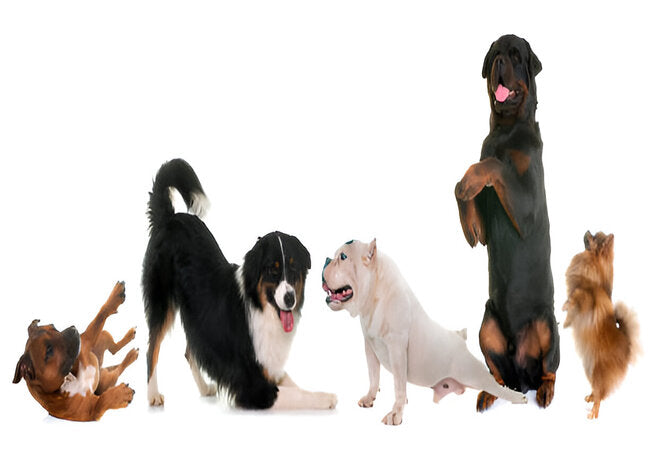Vet‑Approved 2025: What to Do When Your Dog Won’t Socialize With Other Dogs 🐾🐕

In this article
Vet‑Approved 2025: What to Do When Your Dog Won’t Socialize With Other Dogs 🐾🐕
By Dr. Duncan Houston BVSc
Many dogs don’t naturally gravitate toward canine company. As of 2025, vets emphasize that just as humans have different social comfort zones, so do dogs. If your dog avoids or reacts negatively to other dogs, forcing socialization can backfire. Instead, a compassionate, structured plan—based on respectful pacing, positive reinforcement, and expert input when needed—can create long-term confidence and peaceful relationships.
1. 🕵️♀️ Understand Your Dog’s Body Language
Social signals are key:
- Fear & avoidance: tail tucked, ears back, moving away, lip licking, yawning.
- Aggression: stiff posture, growling, barking, snapping—this shows discomfort.
- Neutral: alert, calm posture, interest—but no push.
Let your dog decide how close is comfortable, and intervene if they appear stressed.
2. 🧘♂️ Start with Distance and Observation
Meet quietly from a distance. Stay calm and neutral—dog parks are often too overwhelming.
- Choose quiet areas or sit just outside a park fence.
- Let your dog watch calmly—praising and treating quietly when relaxed.
- Maintain safe space until they're calm and interested, not fearful.
3. 🙌 Gradual, Reward-Based Social Exposure
Create positive associations through brief, structured sessions:
- Arrange playdates with gentle, vaccinated dogs in neutral locations.
- Use high-value treats or praise as soon as your dog shows curiosity or calm behavior.
- Keep sessions short and repeat—consistency builds comfort.
4. 🐕🦺 Controlled Walks & Parallel Play
Calm walking together can feel safer than frontal interactions:
- Walk dogs in parallel with distance, decreasing gradually.
- Praise calm body language; step back at any sign of stress.
5. ⏸ Interrupt & Redirect Overexcitement or Bullying
If your dog becomes overly excited or pushy:
- Use calm time-outs: neutral tone, remove them gently for 30 seconds, and resume when calm.
- Repeat consistently—your dog learns that fun stops when they overstep.
6. 🚫 Respect Their Limits—Avoid Forced Interaction
Not every dog enjoys peer group settings:
- Contribution can be fulfilling: calls, walks, and mental games.
- If your dog prefers people or solo time, that’s okay—fulfillment isn’t one-size-fits-all.
7. 👣 Never Too Late: Socializing Adults
Even older dogs benefit from careful exposure:
- Start slow—neutral territory, structured sessions with calm dogs.
- Repeat positive sessions daily—patience is essential.
8. 🧠 Know When to Seek Help
If fear or aggression persists:
- Consult a certified veterinary behaviorist or trainer—group classes may worsen stress.
- They’ll design a tailored desensitization and training plan with professional oversight.
📋 Sample Socialization Checklist
| Step | Goal | Action |
|---|---|---|
| 1. Observation | Assess comfort | Meet distant dog, watch body language |
| 2. Distance Exposure | Neutral, calm proximity | Quiet sit with treats near another dog |
| 3. Parallel Walk | Co-existence w/out pressure | Walk side-by-side, treat calm behavior |
| 4. Social Play | Engage interaction | Short off-leash meet with friend’s calm dog |
| 5. Cool Down | Encourage reflection | Short break, then resume if calm |
9. 🧩 The Benefits Beyond Social Fun
- Mental stimulation – handling signals improves focus.
- Physical activity – play offers exercise humans can’t replicate.
- Confidence boost – learning they can cope with other dogs reduces stress in new situations.
📱 Ask A Vet App 2025 Support
- 📹 Upload meet-and-greet videos—get expert analysis on pacing, space, and cues.
- 🧩 Tailored exposure plans—step-by-step guidance based on temperament.
- 💬 Live coaching—real-time support during initial socialization sessions.
❤️ Final Thoughts
When your dog won’t socialize, it’s not a failure—it’s a personality. With compassionate understanding, gradual exposure, reward-based training, and professional guidance when needed, you can help them become more comfortable around other dogs. In 2025, vet-approved socialization means honoring your dog’s needs while helping them grow through positive experiences. 🐶✨
Want a printable socialization planner, canine comfort tracker, or step-by-step exposure chart? Visit AskAVet.com or download the Ask A Vet app for expert tools, video feedback, and live coaching to guide your dog confidently forward! 🐾






